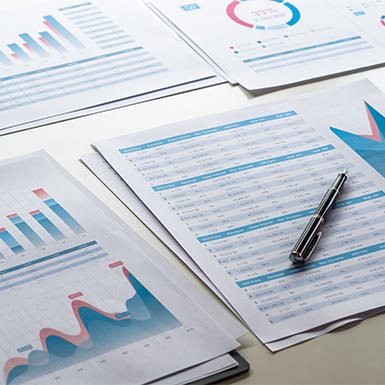Goodwill: Understanding the Two Types
Understanding the Difference Between Personal Goodwill v. Enterprise Goodwill is Important
Not all Goodwill is the same.
In business valuations, the excess of a business’ value over the fair market value of its net tangible assets equals an intangible asset called goodwill. While in many cases it is not necessary to carry this conscript any further, in other situations, there is a need to dive deeper and look at the underlying source of the goodwill to determine how much is personal goodwill versus enterprise goodwill.

What is the difference?
Personal goodwill represents earning power that is personal to one or more individuals working for the company, typically the owner. The individual may have skills and reputation that attracts customers and employees or enables the company to market advantages and premium pricing. If the individual was to leave the company, its market position would be lost costing it revenues and cash flow and thereby impairing value. It’s not an asset that can be transferred. Enterprise goodwill reflects the strength of a company’s workforce, technology, skills, products, and reputation apart from the owner or key person. Enterprise goodwill is transferable to a new owner.
When is the difference important?
In business transactions, it is important for buyers to identify the impact of the seller’s personal goodwill since a substantial risk exists that the attributes of the personal goodwill will be lost at closing unless the buyer is able to arbitrage the risks. Without taking steps to guard the seller’s impact on revenue and profits, the loss of an owner and key employees will adversely affect value. But techniques exist to protect the company from the loss of the personal goodwill and preserve value. Some classic techniques buyers negotiate into deals to protect personal goodwill include a seller’s carried interest (classically this is seller financing often with claw-back provisions if the seller fails to execute on steps to prevent the loss of customers and employees), employment contracts with key employees, noncompetition and solicitation agreements, grants of direct or synthetic ownership to key employees.
When We Need to Quantify Personal Goodwill
There are times when it is necessary to quantify personal goodwill. Often when there is a sale of a business, the seller can realize more favorable tax treatment on the portion of a sale related to personal goodwill. In those cases, appraisers will be asked to quantify personal versus enterprise goodwill.
Another is in family law situations in states where personal goodwill is considered “separate property” and not a marital asset. In these situations, the value of personal goodwill is excluded from the marital balance sheet subject to equitable or statutory division.
Keep in mind that if the standard of value is fair market value – and it is for Federal tax purposes and in many states for family law – there is an assumption that business owns will do what is necessary to maximize the value of their business assets, usually involving an exit strategy. While there is an argument that the sudden loss of the owner may occur instead, there are worklife actuarial tables that allow appraisers to consider the impact of unexpected death or disability.
The Multi-Attribute Utility Model (MUM) method is one method to allocate personal and enterprise goodwill. Appraisers apply scores to various attributes of the key person within the continued operations of the business. These scores are summarized, with the personal and business attribute scores arithmetically allocated to personal and enterprise goodwill, respectively.
Personal Goodwill Attributes
Personal Group
- Ability, Skill, and Judgment
- Work Habits
- Age and Health
Business Group
- Personal Reputation
- Personal Staff
- Personalized Name
- Marketing and Branding
Industry Group
- In-bound Referrals
- Closeness of Contact
- Important Personal Nature
Enterprise Goodwill Attributes
Business Group
- Business Reputation
- Business Staff
- Business Name
- Business Location
- Multiple Locations
- Marketing and Branding
- Systems and Organization
Industry Group
- In-bound Referrals
- Repeating Revenue Stream
- Copyrights, Patents, Processes, etc.
The results of MUM are highly qualitative. Another method that quantifies the impact of the loss of a key person is a before and after analysis of discounted cash flow (DCF). In this case, we forecast operations with the key person in place, and use that forecast to compute a value as is. Through discussions with the key person, usually the owner, we prepare another forecast with the assumption that the key person leaves the business in an orderly fashion with the natural objective of maximizing the value on their departure. Another value computation is made. The difference in goodwill between the two DCF models represents personal goodwill. That result is further increased to account for the probability of shorter worklife expectancy.
Our final quantitative conclusion of personal goodwill is often a combination of the result form MUM and the before and after analysis.
Questions?
About the Author
Robert focuses on business valuation, mergers and acquisitions, forensic accounting, economic damages, and litigation support services with BW Arpeggio.